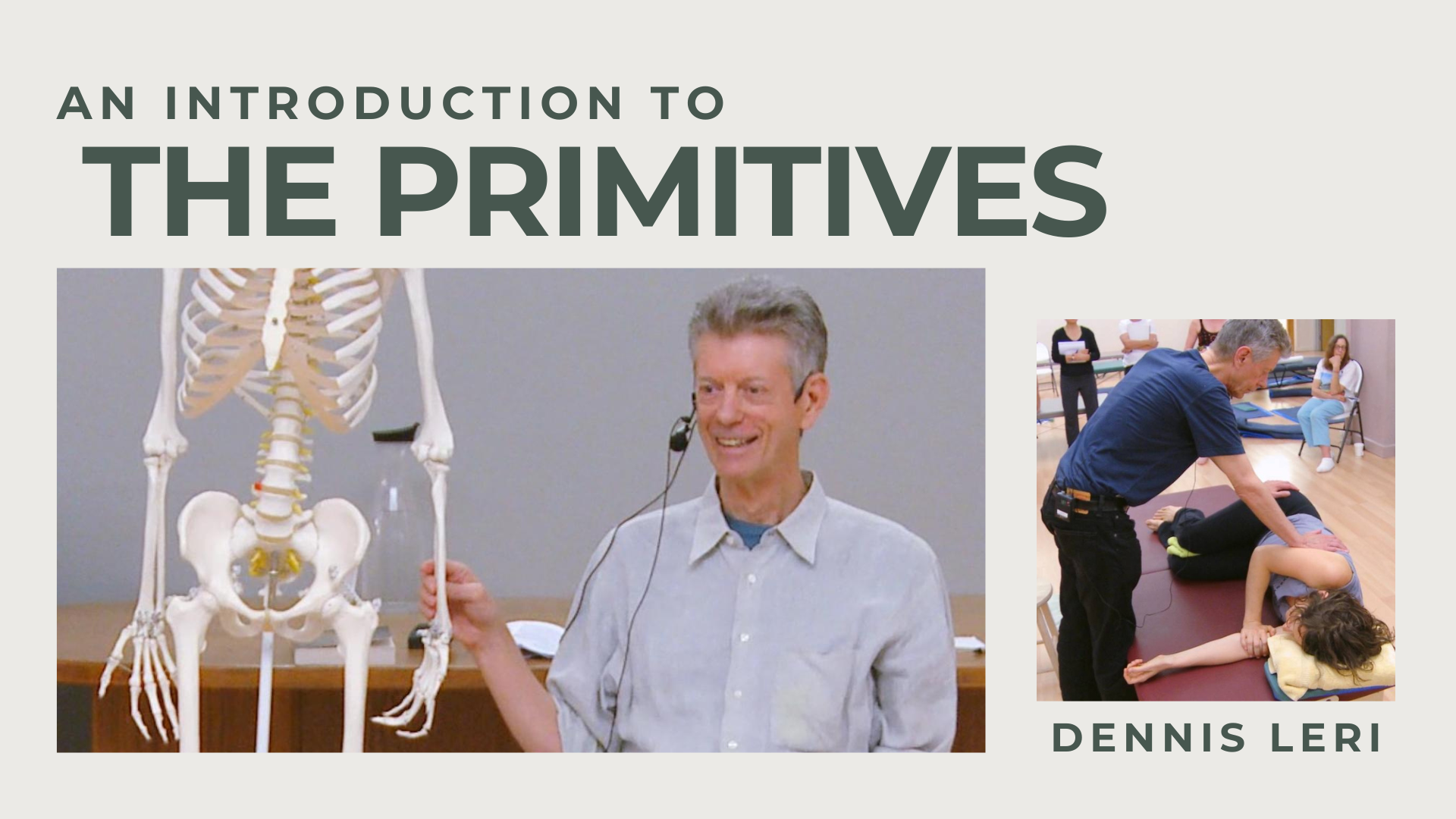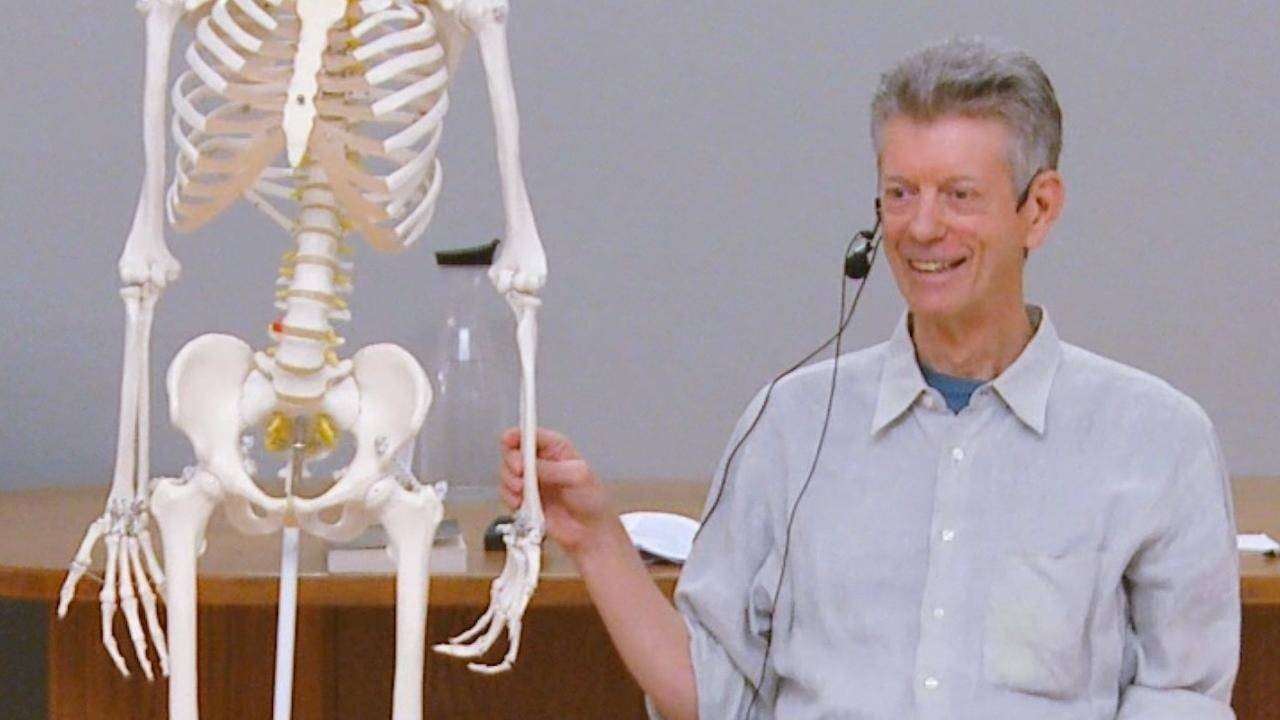
Primitive
[L., primitivus, first or earliest of its kind]
Mathematics
Applied to a line or figure from which some construction or reckoning begins, or to an operation not derived from another
Biology, Anatomy
Applied to a part or structure in the first or very early stage of formation
In this advanced training, Dennis Leri introduces and makes applicable the notion of a primitive and shows how it can be applied to our work.
You will learn how 'movement primitives' are found at all levels of action and are the basis for human movement. Primitives can help to guide us in knowing how to organize our actions, our thinking, and our intentions. They can make your FI lessons more meaningful and effective.
Dennis reveals how ‘the primitives’ can guide us in organizing our actions, thinking, and intentions, and make our Functional Integration® more effective. As Dennis explores how meaning emerges out of what we do and how we do it, he focuses on three categories:
- The movement primitives, which are the basis for all human movement. You will learn how movement primitives are found at all levels of action. Dr. Feldenkrais said that his lessons were no better than common exercise if they did not clarify what he called ‘the primary image’. Dennis explains how to use movement primitives to see, sense and know the primary image. Both the primitives and the primary image will help you to “see” and experience Function, Differentiation and Integration.
- The conceptual primitives, which guide all effective thinking. You will learn how to use modes of “fluid thinking” to know how to proceed in Functional Integration, and to know when a Functional Integration lesson is finished.
- The categorical primitives, which orient our intention toward the aesthetic, pragmatic and theoretical aspects of a FI lesson. For example:
- In an aesthetic lesson, how do we aim for elegance or beauty?
- In a theoretical lesson, when our intention is organized around testing a hypothesis, what general principles can, or do our Functional Integration lessons demonstrate?
- In a pragmatic lesson, how do we invent new means to act, bridge gaps, and see what others don’t?
"Dennis Leri profoundly shaped and inspired generations of Feldenkrais Practitioners. Being one of the first Practitioners and Trainers in North America, his engagement with the Feldenkrais Method stretched over five decades. Dennis was a complex thinker who invited people to join him in an ongoing stream of inquiry. He employed a rich array of angles and perspectives in his teaching, quietly jostling those who worked with him out of their settled view of what the Feldenkrais Method was, or could be, into something larger and more magnificent. Dennis’s interests ranged over a large landscape including Martial Arts, Buddhism, Neuro-Epistemology, Philosophy and Poetics. He was a consummate storyteller. He layered his stories with meaning and mystery, spicing them with meandering sidetracks that turned out to be all about life and the practice of the Feldenkrais Method."
-Elizabeth Beringer, Feldenkrais Institute of San Diego
Eight-plus hour program includes:
- Seven lectures
- Three ATM® lessons
- Five FI® demonstrations
- Lifetime access to the program
- Option to download videos
Functional Integration Demos:
- Clarifying the Primitives
- The Seventh Cervical in Action
- The Foot to the Head
ATM lessons included:
- The Primary Image
- The Primary Image with Tubes
- The Primary Image Expanded
Lectures included:
- Further Explication Regarding the Primary Image
- When the Lines are Long the Muscles are Long
- The Concrete and the Abstract in the Feldenkrais Method
- Vibrant Vitality versus Perfection
- Clarifying the Primary Lines
- The Non-linearity of FI
- The Primary Lines of Force and Waiting
Save 35% thru December 31!

About Dennis
Dennis Leri (1945-2016) was a Feldenkrais Practitioner and Trainer with worldwide experience presenting the Feldenkrais Method in training programs, seminars, and workshops. He graduated from the first professional American training (1975-1977) and apprenticed with Dr. Feldenkrais at the Feldenkrais Institute in Tel-Aviv, Israel. He taught the Method for over forty years.
His accessible and challenging teaching style reflected his training in Western and Eastern philosophy, psychology, martial arts, and poetics. Dennis studied personally with Milton Erickson and studied Buddhism with Jiyu Kennett Roshi and Tarthang Tulku Rinpoche. Dennis also studied closely with Tenzin Wangyal Rinpoche for over ten years. He had 35 years of experience in Japanese and Chinese martial arts, including Chi Kung. Aikido and Tai Chi. Dennis’s teaching was also informed by the work of his close teachers, Francisco Varela, Humberto Maturana, and Heinz von Forester. He published numerous articles on the Feldenkrais Method.

